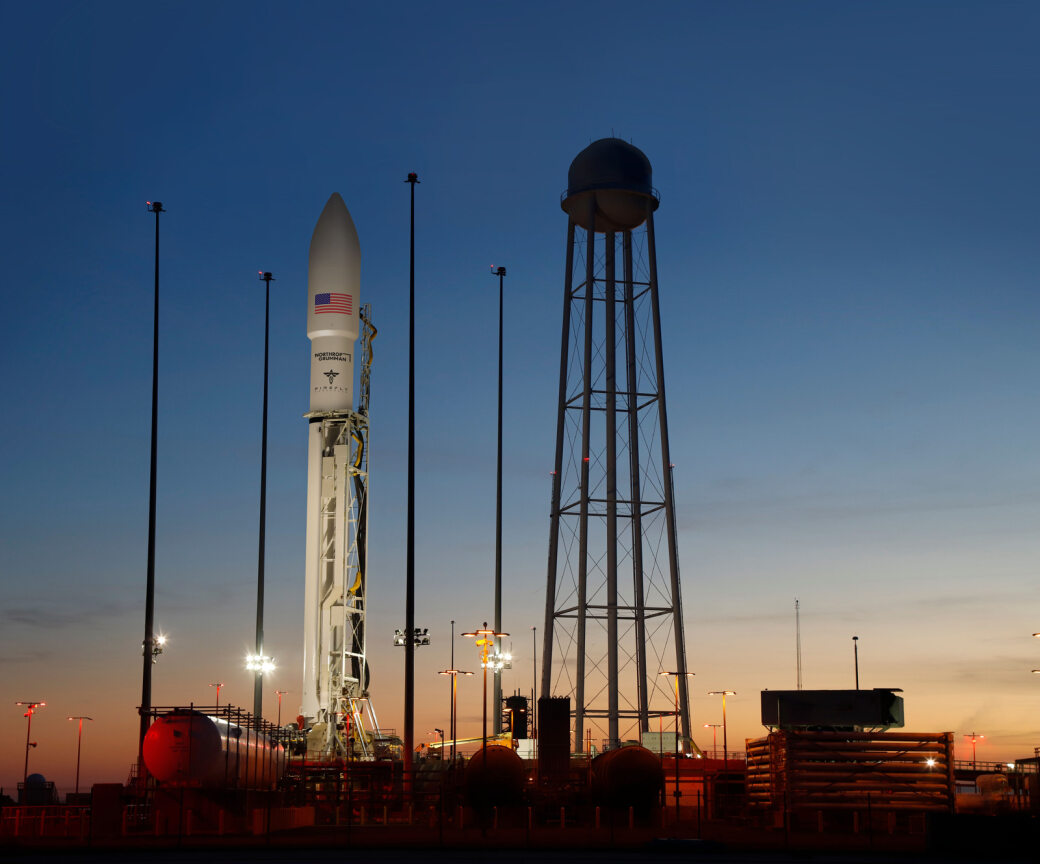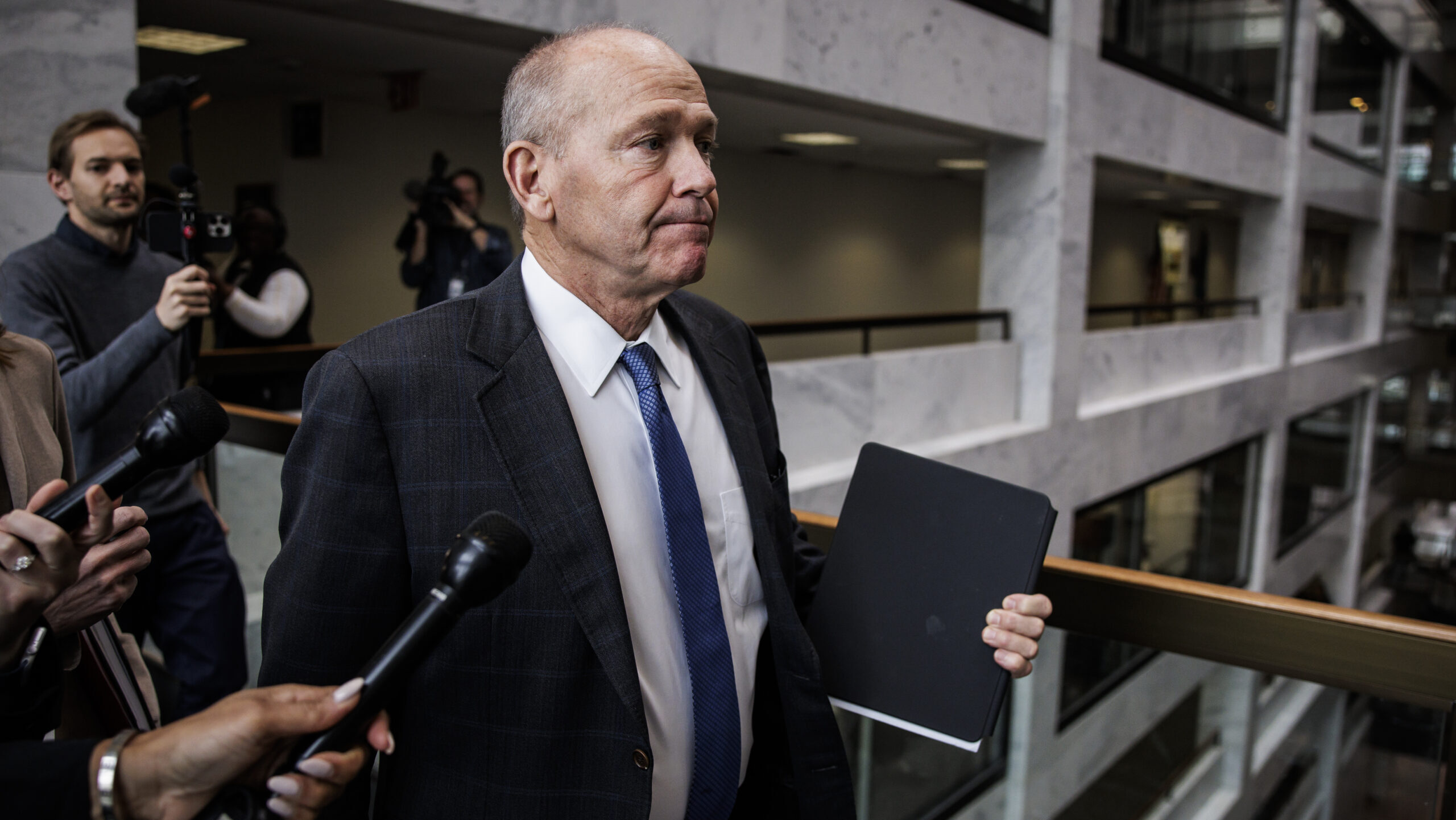
US Air Force artist’s rendering of the Sentinel in flight. (Credit: US Air Force)
The cost of nuclear weapons is always a delicate topic in Washington, so it’s no surprise that news of cost overruns on America’s next-generation ICBM set off a wave of criticism for the program. In this new op-ed, Adam Lowther and Curtis McGiffin of the National Institute for Deterrence Studies argue that added context is needed for critics of the program.
In the six weeks since Breaking Defense and other publications initially covered the news that a Nunn-McCurdy breach in the Sentinel intercontinental ballistic missile (ICBM) program is imminent, nuclear disarmament advocates saw an opportunity to once again argue that a land based ICBM is simply too expensive. Members of Congress also joined the fray.
The challenge, however, is that the current criticism lacks any real context for how long-term and large-scale weapons programs are cost estimated and acquired. It’s important to have this level of detail when looking at the complex, and admittedly costly, case for nuclear weapon investment.
First, start with how modern weapon system procurement is governed by the Federal Acquisition Regulation (FAR), a complex set of laws that, among other things, establishes the process to acquire a new ICBM. Because the Department of Defense no longer replaces major weapon systems on a regular ten-year expected life cycle, the average acquisition program is larger, lasts longer, and has much higher stakes. This is true across many platforms, whether they be aircraft, ships, tanks or other weapon systems.
The Minuteman III intercontinental ballistic missile is a case in point. When it went on alert in 1970, plans were already in the works for its replacement. Ultimately called the Peacekeeper ICBM, development began in 1971 with first deployment in 1986. When the Cold War ended, the production of Peacekeeper was canceled. This left the nation with a force of only 50 Peacekeepers. This newest ICBM was retired in 2002, leaving the much older and less capable Minuteman III as the nation’s only ICBM.
In short, the United States kept its oldest intercontinental ballistic missiles in the field and took a three-decade-long holiday from building new ones. This robbed industry of a generation of engineers, scientists, and program managers with experience building ICBMs and their supporting infrastructure. It also ensured that no Air Force acquisition officer had any experience with ICBMs.
As a result, neither the Air Force nor industry could draw on the experience of their workforce for lessons learned, best practices, or the fingerspitzengefuhl (fingertip feel) that leads to success. As Air Force acquisition personnel worked to develop effective cost estimates for the Sentinel program, they were attempting to project years and decades into the future with incomplete information and a lack of experience with the types of issues that are now making the program more expensive.
It is important to keep in mind that cost increases are not for components of the program that are already under contract. They are for future program elements that are increasing in cost due to inflation (20 percent from 2020–2023), supply-chain challenges, workforce issues and unexpected infrastructure challenges. The challenges mentioned in the previous paragraph, combined with a missile complex infrastructure built in the 1960s, present significant hurdles to overcome. The second- and third-order effects caused by COVID-19 are examples of what former Secretary of Defense Donald Rumsfeld called “known unknowns and unknown unknowns.”
Any expectation that the Air Force could accurately estimate the cost of a program that would last six decades (2015–2075) is absurd. Inflation alone is unpredictable enough to make such an estimate little more than an educated guess.
This begs two questions. First, are cost increases in federal programs unusual? Second, do they matter?
Comparing Cost Growth
It is important to remember that when it comes to cost growth overruns, the Department of Defense and its contractors do a far better job of effectively projecting costs and avoiding impropriety than other agencies of the federal government. A few examples are instructive.
Chris Edwards and Nicole Kaeding examined cost overruns almost a decade ago and wrote:
In recent years, many federal projects have had large cost overruns. The cost to create the Healthcare.gov website launched in 2013 grew from $464 million to $824 million. The International Space Station more than quadrupled in cost from $17 billion to $74 billion. And a Veterans Affairs hospital currently being constructed in Orlando has more than doubled in cost from $254 million to $616 million.
The problem has not gotten better anywhere in government in the years since Edwards and Kaeding penned these words.
The federal official in charge of the Coronavirus Relief Fund estimates that $400 billion of the fund’s $900 billion were lost to fraudulent payments, much of it to foreign entities. Such blatant fraud is enough to cover the entire Sentinel and B-21 Raider bomber programs.
Similarly, the Centers for Medicare and Medicaid Services, the federal agency responsible for these programs, estimates that waste, fraud, and abuse in Medicare and Medicaid cost taxpayers $50–$70 billion annually. This is the entire nuclear operations, maintenance and modernization budget. Americans can afford Medicare and Medicaid fraud, but they cannot afford nuclear modernization?
Advocates of nuclear disarmament should stop using the cost of nuclear weapon modernization to vilify weapons of peace and stability. To claim they are unaffordable and that an increase in their cost makes them particularly unaffordable is misleading and ignorant of acquisition laws.
In 2023, nuclear operations, maintenance and modernization accounted for 0.009 percent of the federal budget. At the height of modernization, the Department of Defense will spend an estimated 7 percent of its budget to operate and maintain the existing arsenal, while also building a new one; a bargain for great-war avoidance.
The American people see the threat posed by Russia, China and North Korea, which is why a majority support nuclear modernization. Cost concerns are not a reason to give up the protection from conventional war that nuclear weapons provide.
Adam Lowther, PhD is Vice President for Research at the National Institute for Deterrence Studies (NIDS). Col (Ret.) Curtis McGiffin is Vice President for Research at NIDS. Together they have more than four decades of experience in the nuclear enterprise.












